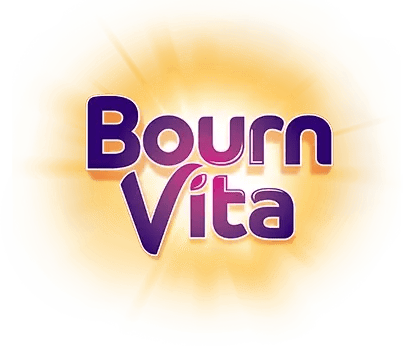- Milk
- Paneer (Cottage Cheese)
- Eggs
- Ragi (Finger Millet)
- Dal
- Nuts and Seeds
- Curd (Dahi)
- Chicken or Fish
- Tofu (For Lactose-Intolerant Kids)
Introduction
Every child grows at their own speed, but nutrition plays a big role in helping them reach their full height potential. Along with physical activity and good sleep, a balanced diet with the right nutrients gives the body what it needs to grow strong and tall. Certain foods can support bone development, muscle strength and overall growth when included in a child’s daily routine.

Calcium, protein, zinc, vitamin D, and magnesium are the key nutrients that directly contribute to height growth. Foods rich in these elements help strengthen bones, support tissue repai,r and improve the body’s ability to absorb essential minerals.
Simple and common ingredients like milk, paneer, eggs, dal, leafy greens and nuts have these nutrients in natural and easily digestible form.
It’s not about eating more, it’s about eating smart. Including a variety of fresh home-cooked meals with growth-supporting foods ensures the body gets consistent nourishment. Encourage children to eat traditional foods like ragi, curd and seasonal vegetables is a simple yet powerful way to build healthy height habits.
Foods To Add To Your Kids Diet To Help in Height Growth
Milk
According to a study published in Nutrients 2020, milk is the richest source of calcium, protein and vitamin D – the nutrients that directly support bone growth and height. Give your child a glass of warm milk in the morning or evening and strengthen their bones, overall growth and daily energy. If your child likes flavoured milk, you can add natural ingredients like turmeric or cardamom to make it more enjoyable without reducing its value.
Paneer (Cottage Cheese)
As per a study published in J Food Sci Technol 2011, paneer is rich in calcium and protein, making it a perfect food for height gain. It also has phosphorus which works along with calcium to support healthy bone structure. Serve paneer as cubes in sabzi, stuffed in parathas or mixed in pulao. It’s easy to digest, filling and a great addition to meals especially for vegetarian families.
Eggs
According to a study published in Nutrients 2019, eggs are packed with high-quality protein and essential vitamins like D and B12, both are important for growth. The yolk has healthy fats and choline, which support muscle development and bone strength. You can serve eggs boiled, scrambled or added to roti wraps. They are versatile and perfect for breakfast or lunch boxes.
Ragi (Finger Millet)
As per the study published in J Food Sci Technol 2011, Ragi is a rich source of calcium, iron and fibre. It supports bone density and boosts stamina, both are important for active growing kids. Ragi porridge, dosa or roti made with ragi flour can be included in breakfast or lunch. It’s a great option, especially for kids who don’t consume much dairy.
Dal
According to FASSI, moong, toor and chana dal are full of plant based protein, iron and zinc. These nutrients help in repairing and building tissues, hence essential for growing kids. Pair dal with rice or roti for a balanced meal. You can also make dal soup or khichdi to make things interesting.
Nuts and Seeds
According to, National Institute of Nutrition, almonds, walnuts, sesame seeds and flaxseeds are rich in healthy fats, protein, calcium and magnesium. These nutrients work together to support strong bones and hormone function both of which are linked to height growth. Give soaked almonds in the morning or sprinkle ground flaxseeds in roti dough, porridge or curd for a tasty boost.
Curd (Dahi)
According to a study published in foods 2022, Curd is rich in calcium, vitamin D and probiotics that aid digestion and improve nutrient absorption. Healthy digestion helps the body to make better use of nutrients like protein and calcium both of which are key for bone growth. Serve curd with paratha, mix it with rice or offer it as a fruit-based snack for a delicious and nourishing treat.
Chicken or Fish
As per a study, published in J Amino Acids 2014, chicken and fish are excellent sources of high-quality protein and essential amino acids. Fish also contains omega-3 fatty acids and vitamin D, which support bone health and brain function. Lightly spiced grilled chicken or fish curry with rice is an ideal way to include these in your child’s diet.
Tofu (For Lactose-Intolerant Kids)
Tofu is good for kids who are lactose intolerant or follow a dairy-free diet. According to ICMR, it is rich in plant-based protein, calcium and iron – all of which are important for height gain and bone development. Tofu can be added to stir fries, parathas or light curries.
Conclusion

Supporting your child’s height growth isn’t just about quantity, it’s about quality. Foods like milk, eggs, ragi, dal and paneer offer the right balance of protein, calcium and essential nutrients that strengthen bones and support steady growth. With a variety of home-cooked meals and a little creativity, you can make every bite count – help your child grow tall, strong, and confident.
Her love for storytelling began with reading her grandfather’s speeches, where Tarishi saw the power of words in creating lasting memories. Combining her passions for food and writing, she has turned her life into a fulfilling path of sharing stories that celebrate flavours and how food brings communities together.
The views expressed are that of the expert alone.
The information provided in this content is for informational purposes only and should not be considered a substitute for professional medical advice, diagnosis, or treatment. Always seek the advice of your physician or another qualified healthcare provider before making any significant changes to your diet, exercise, or medication routines.
References
https://nin.res.in/dietaryguidelines/pdfjs/locale/DGI_2024.pdf
https://pmc.ncbi.nlm.nih.gov/articles/PMC4213980/
https://pmc.ncbi.nlm.nih.gov/articles/PMC9455928/
https://www.nin.res.in/downloads/DietaryGuidelinesforNINwebsite.pdf
https://pmc.ncbi.nlm.nih.gov/articles/PMC4033754/
https://pmc.ncbi.nlm.nih.gov/articles/PMC6470839/
















